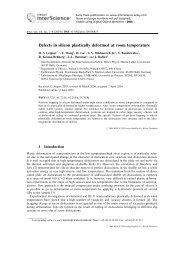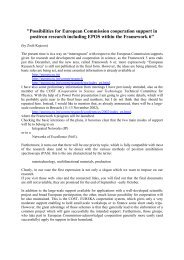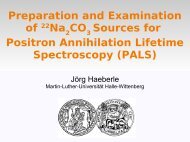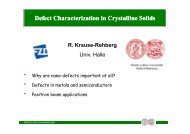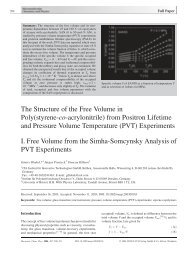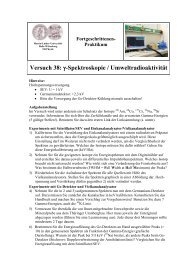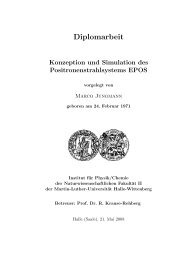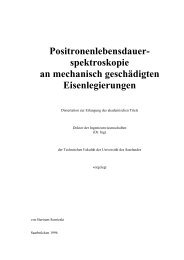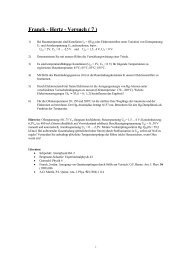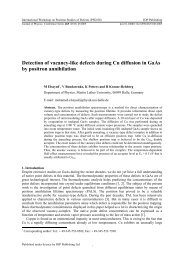Introduction into defect studies in ceramic materials(III) - Positron ...
Introduction into defect studies in ceramic materials(III) - Positron ...
Introduction into defect studies in ceramic materials(III) - Positron ...
You also want an ePaper? Increase the reach of your titles
YUMPU automatically turns print PDFs into web optimized ePapers that Google loves.
Defect Chemical Reaction<br />
1. Mass, Charge and Site Balance<br />
The free energy for each of these “quasichemical” reactions is simply the<br />
Schottky formation energy, and the equilibrium constant is given<br />
by:<br />
K<br />
s<br />
⎛ ∆gs<br />
⎞<br />
= exp⎜− ⎟<br />
⎝ kT ⎠<br />
Notice that the equilibrium constant is a function of temperature only.<br />
This dictates that the product of the cation and anion vacancy<br />
concentrations (Eqs. 2.12 and 2.13) is a constant at fixed temperature.<br />
Furthermore, when only the <strong>in</strong>tr<strong>in</strong>sic <strong>defect</strong>s are present, the<br />
concentration of anion and cation vacancies must be equal for charge<br />
neutrality, and so we obta<strong>in</strong><br />
[ ] [ ] •<br />
∆gs<br />
V ′ Na = VCl<br />
= exp( − )<br />
( 2.<br />
15)<br />
2kT<br />
Which is the same result as <strong>in</strong> Table 2.1.<br />
3<br />
( 2.<br />
14)



